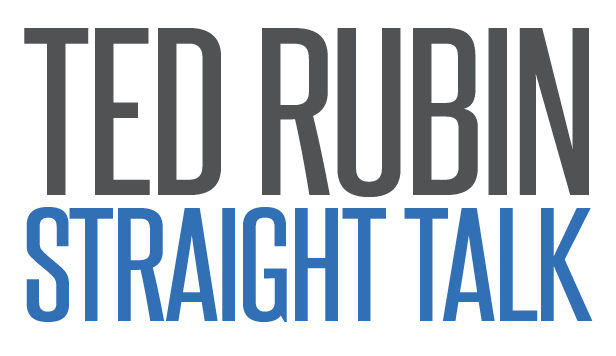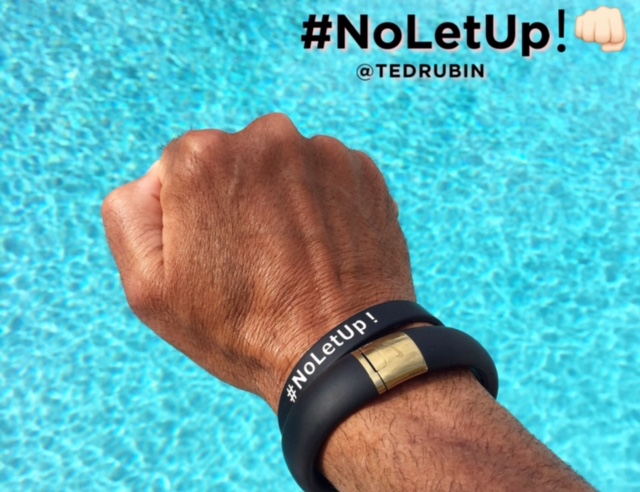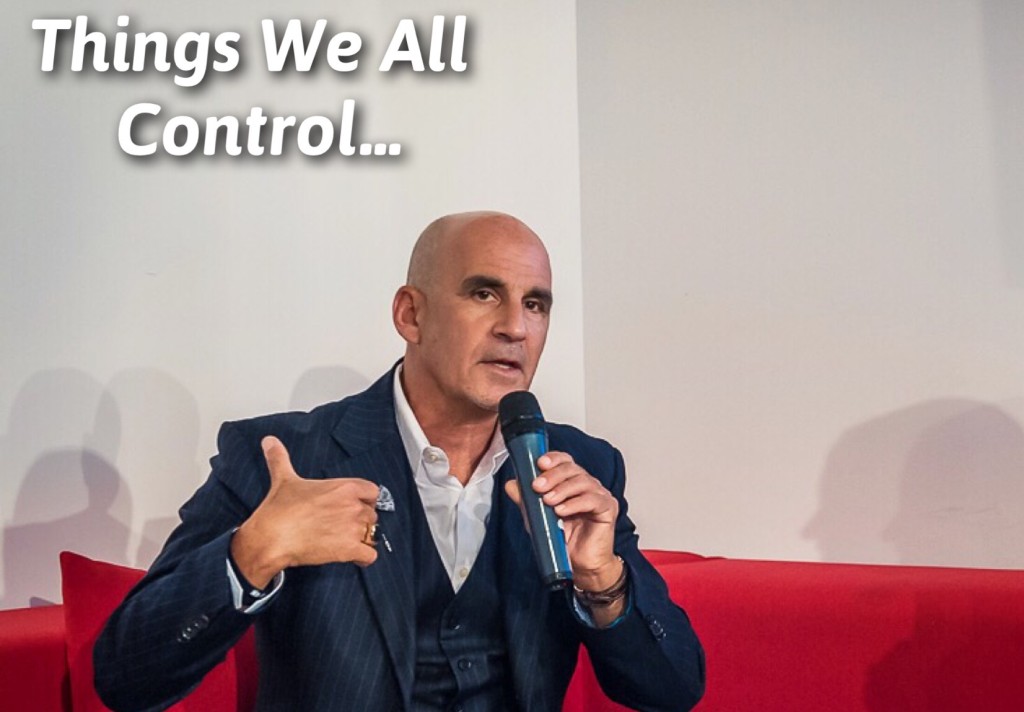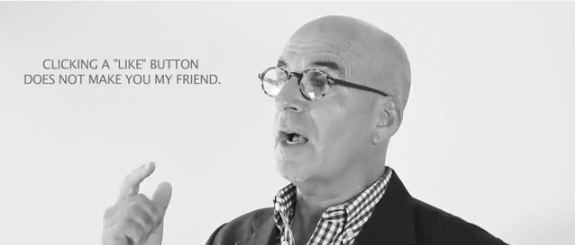The CMO should oversee all marketing, PR, communications, customer service, and customer experience management. Every touch point with the consumer needs to come under her purview. Often this is not the case—customer service and communications are often siloed. This is a big mistake in the new marketing/social world.
TedRubin
Children Can Teach “Us”… Let’s Not Miss Those Lessons!
We talk and write a lot about what we are teaching our children and what they are learning from us – but if we only focus on one side of this teaching/learning relationship, we are missing some of the greatest examples of our lives… let’s remember all we can learn from our children.
So… What is #NoLetUp! ???
There’s a buddy of mine named Tony Luisi, whom I met when I was at 1-800-Flowers. He was on my team and supported me with corporate sales and a lot of other things. A very active guy, a ball player and a Dad, Tony started using the phrase “No Let Up,” with regard to honoring persistence and a relentless spirit, and fund-raising purposes for worthy causes. Tony thought it was a great fit for me, too, so he reached out and suggested I use it in some way. It really resonated with me so I created the hashtag #NoLetUp! and started using it in a number of different contexts and incorporating it in my Return on Relationship and #ThisDadWontQuit message. Here’s what it means to me.
The Battle Between “Busy” and “Productive”
Today we have unprecedented access to information anywhere and anytime. We can multitask using multiple screens, and we can connect and converse on the fly—yet there are still only 24 hours in a day. Do you think that our increased level of “connectedness” today has anything to do with being busier, yet less productive? You bet it does, and I fall victim to this just as much as anyone else. In fact, I notice more and more these days that I need to “unplug” on a regular basis in order to regain some equilibrium. Do you notice that in your life as well? Here are a few tips I’ve gleaned from personal experience that can help you stay productive without being overwhelmed with busy-ness:
How Bad Structure Kills Creativity, Productivity and Morale ~ via @Workfront_inc
Poor work structure not only kills creativity, says Ted Rubin, but also ruins all the factors that create success.
As part of the Workfront “Structure Grows Creativity” project, we asked marketing thought leaders to give us their take on the ongoing “Structure vs. Creativity” debate. This is what Ted Rubin, speaker, strategist, and CMO at Brand Innovators, had to say…
Roles of the CMO and CIO
The CMO should oversee all marketing, PR, communications, customer service, and customer experience management. Every touch point with the consumer needs to come under her purview. Often this is not the case—customer service and communications are often siloed. This is a big mistake in the new marketing/social world.
Have We Lost the Art of Conversation?
Have we lost the art of conversation? Has the digital age with its shortened attention spans and 140 character limits shriveled what was once our primary form of engagement? Do we bypass conversation via social channels, which allows it to happen 24/7 when used to it’s best advantage, and instead simply continue traditional marketing broadcasting… for business AND personal.
How to Set Goals by Setting the Controls
In order to set goals, and accomplish them, you need to have control over certain important controllable aspects of daily life. The bottom line is really your mindset and how you approach your business and life, in the first place.
Interview: Ted Rubin – Social Media Influencer and Keynote Speaker ~ via @SimpleBlissMag
Ted Rubin and I “met” back in 2010 via social media and Ted’s extraordinary personality and commitment to establishing and maintaining connections is what has made him who he is today. His “Return on Relationship” theory of engaging in a more personal way in ALL aspects of our lives has become one influential message that is quickly becoming a beloved belief. Ted’s amazing ability to connect and influence is well-deserved and I appreciate his time with me in answering some questions for Simple Bliss Mag.
Customers to Brands: #WSILTY (Why Should I Listen To You?)
The words “customer experience” and “engagement” are being bandied about a lot lately, and new tools are being created every day to supposedly help brands bridge the gap between engagement and sales. But let’s not get the cart before the horse. Before you go out and spend money on the next big CEM or SaaS tool, there are two basic principles you need to work on:
- A Deep Understanding of Your Audience
- A Crystal-Clear Value Proposition
If this sounds like Marketing 101 to you, well, you’re right. But you’d be surprised how many brands throw these tried and true principles out the window in favor of the next “big idea.” After all, this is a new era, right? Isn’t exploding technology turning marketing on its head?
Yes and no. It’s true that we’re charting new ground when it comes to social connection and engagement, and technology is changing so fast it’s hard to keep up. In this environment it’s easy to feel you’re getting left behind; however, the truth is that we’re all people being carried by the same current. Rather than desperately grasping at every new tool that floats by, it pays to do something counter-intuitive: relax, observe and think.
Who is your audience (really)?
Today’s technologies allow us a myriad of ways to listen to our audiences and learn about their pains, passions and preferences. But do we do it? Not as well as we should. We get caught up in “big data,” but don’t often look deeper. Take a leaf from the old-school books on direct response marketing and spend quality time listening to what your audience has to say. Where do they hang out? What are their dreams? What are their problems? How do they live, play and work? What are the social issues that matter most to them? Unlike the “focus group” marketing of yesteryear, social platforms have brought this type of listening to a whole new level if we’ll just use them.
I’ve talked before about manually digging into people’s social profiles to learn more about them. When brands direct more resources to this type of listening, they gain much greater understanding of their customers and prospects as individuals with hopes, dreams and everyday problems. It’s this knowledge that helps them scale connectivity and engagement, and allows them to create the memorable experiences their audience wants to share.
Why should your audience listen to you?
Today’s consumer is busy, distracted and a little overwhelmed with technology, so once you get to know them, spend time thinking about how you help them. If we spent more time asking ourselves “How can I help?” rather than “How can I sell?” we would be a lot better off.
What makes your brand special? What is it about what you offer (or the way you offer it) that makes people sit up and take notice? Better yet, what makes their experiences with your brand unique? When you know your audience well enough to understand their motivations and empathize with them, it’s much easier to distill your unique value proposition. Having a crystal-clear vision of your value helps your brand in two ways. It helps you create content that will attract your audience, and gives your employees a mission standard for ensuring that all experiences with your brand are exceptional.
Listening to your audience and using what you learn to develop a clear mission and value statement will help you put strategy before tactics—a big advantage in a rapidly changing environment. So before jumping at the next tactic in the technology stream, make sure you are using the tools you already have to answer the #WSILTY question first.







